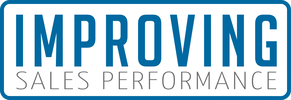|
Many sales reps and marketers truly believe in their products. They are convinced that the product is great, and they're also convinced that customers will love it. However, there's often a disconnect between the reasons they are so excited about the product and the reasons customers may be interested in it. That disconnect can lead to missed opportunities, lost sales, and a lot of head-scratching on the part of your team members. "Why aren't we selling more of this product?" they may wonder. "What are we missing?" In many cases, the root cause of the problem is a failure to use benefits-centered messaging when interacting with prospects and leads. The Difference Between Features and Benefits When we talk about "benefits-centered messaging," what are we actually referring to? Simply put, it's a type of storytelling that's relevant to and compelling for your audience. It's not focused on the what or the how of your product — rather, it articulates the why of it: why would your leads want to buy what you're offering? Why will it make their life easier, simpler, or better? Benefits-centered messaging is much different from features-centered messaging. For example, imagine a marketing message focused on the features of a new smartphone. Perhaps it discusses how advanced the camera is, or how many pixels will be in your photos. The emphasis is on the technical aspect of the product, the what and how. Now take that same scenario, and imagine a benefits-centered message for the smartphone camera. Maybe the message would be something like: "Capture your memories and relive them more clearly than ever before." The focus has shifted away from the technical specs, and onto why customers should be interested in the camera — in this case, because it will help them better remember precious moments for years to come. The Two Paths To Purchase At the core of every purchase decision is at least one of two powerful motivators: fear and desire. People either want to avoid pain or achieve a state of being better than the one they currently are in. All products and services are designed to help the buyer avoid the pain they fear or obtain what they desire. Therefore, the job of your sales and marketing teams is to tell a story about how your product will help customers meet one of those goals (or sometimes both). You could even replace the word "benefits" in the phrase benefits-centered messaging with "positive outcomes" — the meaning remains exactly the same. What's the point? Dumping a list of features onto your website or other forms of marketing content probably won't get you the best results. On the other hand, identifying what your customers truly want and need, and creating messaging that guides them to your solution, is what will help you get wins consistently. With that in mind, try looking at your product through the eyes of the customer by asking yourself questions like:
Remember, the same product may hold out different benefits for different people. So while it's important to know what a product does, it's just as important to understand what a product can do for the customer. How To Beef Up Your Benefits-Centered Messaging It's important for your company to have a solid, well-articulated identity. In other words, you need to answer the question: "What do we do?" Now, the challenge is to build on that foundation by answering the question: "What positive outcomes can our company help bring about?" In terms of interactions with your customers, there are two main ways to do just that: 1. Communicate Benefits With Your Marketing Copy A lot of company websites out there start almost every sentence on their home page with "we" or "our." For instance:
The problem with these statements is that, frankly, just about any competitor could say the same thing. Experience, commitment to customer service, hard work — these are simply the price of entry in most industries. They're not differentiators in any meaningful way. At the end of the day, people don't buy from your company because of your expertise or technical abilities; they buy from you because of the benefits you offer, and their trust that you'll deliver on those benefits. Therefore, your entire website (and any other marketing materials you publish) should speak to and serve the needs of your target audience. Don't brag about how fantastic your company is; rather, make it clear how you've made — and are making — your customers' lives better. 2. Center Your Conversations Around Positive Outcomes Using benefits-centered messaging is especially important when conversing with leads. Many sales reps fall into the trap of extolling the virtues of their product without seeking to understand what specific fear or desire is motivating the person across from them. On the other hand, asking questions and truly listening to the answers can help salespeople to steer the conversation in the right direction, and ultimately toward a purchase. Consider using the following questions (or variations on these questions) to better understand your prospects:
It's amazing how many sales reps don't ask these questions — and yet, getting the answers is often the key that will help you convince the customer of your solution's value to them! In summary: don't focus so much on product features. Instead, think like your customers, and focus on the benefits they're looking for. If your sales and marketing teams practice this approach, you're virtually guaranteed to see improved results from their efforts. Learn More A healthy relationship between sales and marketing is vital to an organization’s success. Dive deep into this effective strategy in a new book called Sales & Marketing Alignment. If you'd like more insights on how you can improve your sales leadership, contact us. Or sign up for our newsletter for more valuable resources.  If you want your company to experience significant and sustainable revenue growth, it's vital that you have three pillars of sales success in place: strategy, process, and people. Why is each of these elements so essential to a well-oiled sales machine? Well, consider this:
However, when all three components are functioning at a high level and working well with each other, you're bound to see more wins than ever before. Sales Success Starts With Strategy You can think of strategy as an understanding of your mission or goal, along with the ability to select a path that will help you achieve it. In terms of sales success, strategy is a well-thought-out plan put into action. Many business leaders either have an inconsistent, "winging-it" approach to strategy or no strategy at all. For instance, some marketing and sales managers believe that staying busy is the same as being strategic. As a result, their focus is on running more ads and uploading more social media posts, whether those actions contribute to an overarching plan or not. Other managers are scared to "rock the boat." So they stick with the strategy they inherited from their predecessor, who inherited it from the manager before him, who inherited... well, you get the idea. Still others (and this is especially common among small business owners) have no grand plan at all. They constantly run around "putting out fires" rather than thinking about the bigger picture. The Basis for an Effective Strategy The truth is, if you want to drive business growth, it's absolutely imperative that you have a sound strategy in place as your foundation. And your strategy should be constructed as a mixture of at least two major materials:
Once you have those key ingredients on hand, you can add other things to the mix: intentionality, creativity, logic, and action-oriented thinking. You can develop clearly defined goals to reach within the next three months, six months, year, or beyond. You can start thinking about the processes that need to be set up to achieve those goals and the people that will be the best fit for each process. Again, it all starts with strategy! Process is Transportation for Your Strategy If strategy is like the roadmap that helps you plan out the best route from point A to point B, process is the vehicle that actually carries you there. Processes are the specific tactics that make your vision a reality. And they are most effective when they're replicable, scalable, and flexible enough to evolve when necessary. Process is also about working the margins to gain any edge on the competition, no matter how slight. Well-built processes may not guarantee your sales team a win in any given interaction, but they'll certainly increase your odds of gaining a win. Think of a baseball pitcher who has to employ the same mechanics repeatedly to hit his spots and get the outs. Similarly, your sales team will be more consistent and effective when they follow well-defined workflows day in and day out. What are some particular areas in which process can drive strategic alignment? For one, think about the sales and marketing funnel. Focusing on process can help you map out your strategy to get customers from point A (the top of the funnel) to point B (the bottom). Develop specific processes as answers to the following questions:
In addition, it's always a good idea to consider where automation can fit into your processes. Which parts of the funnel need to be handled by a human team member? Which parts can be "outsourced" to a program or algorithm? The bottom line is that processes can truly help your team members to "work smarter, not harder." Get the Right People in the Right Roles You can automate some of your processes. However, you can't automate the people on your team. You can't just fill key roles with warm bodies and expect that all your work with strategy and process will pay off. The simple truth is that not everyone is well-suited for the same roles in your organization. Not every star sales closer is cut out to be a sales manager. And not every sales manager is necessarily a star closer. It's important to understand both the strengths and the weaknesses that each individual on your team brings to the table — and then play to those strengths rather than attempt to shore up the weaknesses. Never mistakenly think that marketing and sales require interchangeable skills. It "takes a village" (i.e., aligned sales and marketing teams) to stay competitive in today's business world. However, the village only functions properly when each member is in the right role. Apart from getting the right people in the right seats, it's also important to actively promote alignment between teams. One key way to accomplish this is through regular integrated meetings. Granted, you don't need to have every team member from sales and marketing attend every meeting planned throughout the course of a week, but it is a good idea to have regular check-ins between sales and marketing leaders, along with key representatives that can provide helpful input when decisions need to be made. At the end of the day, investing in these three pillars — strategy, process, and people — will help your company to enjoy sustainable sales success and your team to yield improved sales performance. Now that is a foundation worth building! Learn More About Sales Success A healthy relationship between sales and marketing is vital to an organization’s success. Dive deep into this effective strategy in a new book called Sales & Marketing Alignment. If you'd like more insights on how you can improve your sales leadership, contact us. Or sign up for our newsletter for more valuable resources.  Time is an invaluable resource, and you need to make the most of it at every opportunity. The only thing is that there is no exact method to calculate how fruitful you are with time. That probably explains why 34 percent of salespeople indicate that the effectiveness of their efforts is only minimal. However, measuring sales pipeline velocity can be the first step to increasing your company’s revenue and optimizing your sales process. That means building a more efficient, cohesive sales team and bringing targeted changes to your sales process is possible when you optimize your pipeline velocity rate. Having precious leads sitting in your CRM is not enough. That’s because when leads reach the top of the sales funnel, roadblocks may emerge, preventing the average salesperson from hitting their quota. This happens because prospects tend to move sluggishly for longer than they should and appear to never reach the bottom of the funnel. In part, that explains why optimizing sales pipeline velocity is something you cannot afford to overlook. What Is Sales Pipeline Velocity? Simply, sales pipeline velocity refers to the speed at which your prospects move from the top of the sales funnel to its bottom. Note that the metric applies regardless of whether you lose or win leads. In other words, it is a measurement that helps you understand the speed at which you are making profits. You can also view pipeline velocity as the value of every individual lead over a specific period. As such, a formula is what matters in this case and not just a single parameter. The following are the components of that formula.
The Importance of Pipeline Velocity First, understand that realizing a smooth transition of prospects through all the sales cycle stages is a challenge if you do not have a healthy pipeline. That implies that the slightest change in how you operate can improve sales pipeline velocity and increase your revenue as well. So, if you want to be a successful entrepreneur, you need to monitor your pipeline velocity from time to time. Sales and revenue forecasting are part of the essential aspects of every enterprise. As such, understanding how fast leads move through your pipeline and the value of each can help you improve those numbers. The bottom line here is that pipeline velocity can help you realize higher conversion rates by accurately optimizing each stage of your sales process. What Is the Goal of Sales Pipeline Velocity? It is worth mentioning that pipeline velocity can help your sales teams because its goal is twofold. Indeed, part of the priorities of your sales team is increasing qualified leads and reducing the number of unqualified ones in the pipeline. On the other hand, sales leaders focus on moving deals through the pipeline as fast as possible. In that case, pipeline velocity can help you assess the effectiveness of both goals. Additionally, sales pipeline velocity will prove instrumental when setting realistic sales goals and quotas. That, in turn, allows you to gain insight into your daily returns. Insight Into Improving Pipeline Velocity Monitoring your pipeline velocity regularly allows you to grow your enterprise and help it thrive. This metric helps you discover how to accurately optimize every stage of your sales process to increase conversion rates. Here are a few tips for improving pipeline velocity. 1. Consider Nurturing Your Leads With Value Driven Content Emailing or calling your leads numerous times with high value messages allows you to move them through your sales pipeline. The focus here should be reaching out to leads proactively in a way that creates value and builds trust. Do this by making sure your content touches them through social media channels, and by simply remaining in touch with them to demonstrate that you care, are thinking of them, and that building relationships is important to you and your organization. For instance, you can send your leads a blog post (protip - that can be generated by your marketing team or something your team did not write but is valuable). Include a message like, "After coming across this article, I thought you would find it useful." By doing so, you are nurturing your leads with value versus trying to nurture them constantly with sales focused messages. The intention, in this case, is to be a resource that understands your leads, what is important to them, and what will provide them value versus a constant buy now drumbeat. Once your prospects discover that your primary objective is providing value, they will be more receptive to investing more and more of their time to learn about you, your company, and your offers, ultimately unsticking leads in your sales funnel and increasing your sales pipelines’ velocity. 2. Streamline Your Sales and Marketing Departments Aligning sales and marketing plays a significant role in optimizing pipeline velocity. That is the case because if your marketing unit sends unqualified and half-baked leads to your sales department, your sales pipeline will be clogged and slow. As such, improving communication between the two departments can improve the lead qualification process. Ultimately, that will increase the speed of moving leads through your sales pipeline. 3. Prioritize Qualified Leads Indeed, giving every possible lead a chance is advisable, but it may not be practical if you have a large population of leads. Plus, not all leads are created equal. Leads will be in different stages of the buyer's journey. Treating them all the same is ineffective and inefficient. To increase pipeline velocity think about:
Conclusion Prioritizing sales velocity is critical since a full pipeline does not necessarily mean you will realize a desirable outcome. Measuring your pipeline velocity regularly and tracing anything that may affect it is paramount in this case. Identifying your ideal company profiles and personas allows you to target prospects with greater chances of converting to buyers. So, you need to remain creative. And working with other units within your entity is not an option in this case. Doing so supports your sales cycles, which makes them more efficient. Also, remember that high-quality leads are an indispensable factor when it comes to speeding up your conversions. You will only find success once you identify what makes your sales velocity spike. If you'd like more insights on how you can improve your sales leadership, contact us. Or sign up for our newsletter for more valuable resources.  Is your entire sales process built around "solution selling?" Or do you solution sell at least part of the time? If so, then it's important to demonstrate to your prospect that you can create real value for them. Show you're committed to finding not just a solution, but the best possible solution to their problem. One great tactic that can help you take your solution selling to the next level is called the "trial balloon." Let's talk about how this simple, proven construct can really propel your conversations forward, and aid in your value-creation proposition. What is the Trial Balloon Strategy? The term "trial balloon" originated during the 1700s. The Montgolfiere brothers in France were striving to create a working hot-air balloon. Obviously, they didn't want to risk life and limb by taking off in a hot-air balloon without some assurance that it would actually stay aloft! Thus, they sent up trial balloons to test their design before finally committing to a journey of their own. In marketing terms, the basic concept is the same. The trial balloon strategy is a technique in which you put an idea "up in the atmosphere," and see what your prospect thinks about it. Most prospects don't want to quickly commit to a contract or agreement unless they first have some assurance that they'll get real value in return. As you "float" ideas to them, and they see the value in your ideas, their trust in you will gradually grow. This process gradually gets you much closer to a final sale. How Does It Work for Solution Selling? It's important to realize that sending up a "trial balloon" for your prospect may require some quick pivoting on your end. After all, if your prospect isn't enthusiastic about one idea, then it's vital that you transition to another idea before they lose interest completely. (This is why you should always have multiple ideas in your arsenal, especially in the initial stages of your relationship with the client.) So how exactly does the trial balloon technique work? Here's one possibility: Imagine you're talking to a new prospect named Rick. He's already told you about the main pain points he wants to address. You could say something like: "Thank you for sharing your situation with me. I really appreciate your straightforwardness. I do want to create some value for you, and I have some ideas. So what I'd like to do is get my team together, sit down with you, and share these ideas before we finalize a proposal. I just want to make sure that I'm on the same wavelength as you. Would that be okay?" Nine times out of 10, Rick is going to say "yes" to your suggestion. Then, after you and your team have strategized on which ideas to present, you can share those with him. Trial balloon ideas are like rungs on a ladder that ultimately lead to a sale — the more ideas Rick likes, the easier it will be for you to provide him with a customized solution to his problem. Each step increases the possibility that he'll do business with your company. Watch me explain this concept in this video tutorial. Trial Balloons Work at Every Stage in the Buyer's Journey The great thing about trial balloons is that they work all the time! Whether you're dealing with a current client, or with someone who's just entered your funnel, you can always use this technique to get a pulse on where they are, and what they're looking for. A "trial balloon" strategy should be part of your consultative selling toolbox. If you make good use of this technique, you'll almost certainly see your sales performance improve dramatically. If you'd like more insights on how you can improve your sales leadership, contact us. Or sign up for our newsletter for more valuable resources.  Two of the most important elements of effective sales are (1) understanding your clients, and (2) offering a solution that meets their needs. After all, if you don't know who your end users are or what they need, how will you possibly convince them to buy from you? The process of getting to know your target customers and adapting your offerings to their pain points and goals dovetails nicely with the concept of ideation. Let's talk about what we mean by that term, and how it can help your team to improve their sales performance. What is Ideation? One definition of ideation is "the process of developing and conveying prescriptive ideas to others, typically in a business setting. It describes the sequence of thoughts, from the original concept to implementation." In plain English, ideation is the process of developing and implementing ideas. Ideation is a big deal because employees and leaders that are 100 percent focused on going through the motions of their job will miss opportunities to improve their products, services, or strategies. It takes time and effort to temporarily step away from the routine tasks of your job and meditate on new concepts. However, the rewards of ideation are well worth the investment. Just ask Beethoven, Einstein, and other geniuses of art and science who produced masterpieces through hours of deep thought. (But don't worry. You don't have to be the next Einstein to think up a great idea!) Examples of Ideation
There are several examples of ideation at work in the corporate world. Steve Jobs may immediately spring to mind. His innovative approach to consumer electronics was the result, in part, of focused meditation on what customers wanted, and how Apple's products could fill those needs. Google is another example (at least in its early days). At one point, the company encouraged employees to spend up to one-fifth (20 percent) of their time at work meditating on new ideas that intrigued them, and could eventually become solutions to real-world problems. Even toothpaste companies have taken advantage of ideation as a business strategy. For instance, back in the 80's the team at Unilever had to brainstorm ways to compete with the two "toothpaste giants," Colgate and Crest. The solution? The world's first baking soda and peroxide toothpaste, Mentadent, which sold very well as a "specialized" product. The point is, incorporating ideation into your business plan makes good sense, and can open doors for your team that you would never have known about otherwise. So now the question is: How does ideation specifically relate to the sales process? Integrating Ideation into the Sales Process If you really want to help your clients meet their business objectives, then it's important to lead them through the ideation process. This means taking them through two important steps: discovery and ideation. 1. Discovery In the first phase of the ideation process, you want to learn everything you possibly can about the client. Many companies will ask: "What's the main problem the client is facing?" and stop there. While that is a key question you need to answer, you have to go deeper than that. For one thing, you want to divide that question into two parts. What challenge is the company facing? And what challenge is the individual (or team) facing? It's important to delve into both of these factors. Even if you have a "big picture" solution in your back pocket, it may not resonate with your client until they understand how it will affect them and their team personally. Ask the "magic wand" question. In other words: "If you could wave a magic wand and instantly solve all of your business problems, what would that reality look like?" And this is key: listen to their answer. (It's amazing how much of effective sales is listening to the client, versus talking to them.) When you're in the discovery phase, come armed with basic questions like:
This process of discovery is critical. You'll not only understand exactly where your client is coming from, but the answers to these questions will also set you up for step #2: ideation. 2. Ideation In the ideation phase, your main objective is to throw as many ideas as you can into the hat. In order to do that, you want to bring together as many stakeholders as you possibly can. This includes everyone from your original discovery session, plus any domain experts, the client's production team (if applicable), and so forth. Think of it as a mass brainstorming session with a clear focus. Once everyone has assembled, draw a 2x2 matrix on the whiteboard. Mark your first column "individual;" your second column "company;" your first row "problems;" and your second row "solutions." Start with the problems row. List out all the challenges and pain points that you identified in the discovery phase, both for individuals and for the company as a whole. (And remember, discussing individual challenges is a huge difference-maker throughout the entire process). Ask your audience if you missed any questions or pain points in the original discovery session. If they come up with any, write those down for future reference. Next comes the fun part: brainstorming solutions to the client's problems. It's okay if your team comes up with ideas that are completely nuts! The point of this exercise is to explore all the options and opportunities that are open to your client, and think about ways to implement the best solutions. At the end of this process, you need to make sure that there's follow-through in two key areas:
The entire ideation process can take anywhere from half an hour to a full day. But if you take the time to go through it, your team may come up with some truly amazing solutions. And your sales performance will improve as a result. If you'd like more insights on how you can improve your sales leadership, contact us or sign up for our newsletter for more valuable resources.  When building a house, it's absolutely vital that your foundation is rock-solid — but in order to lay a rock-solid foundation, you have to dig deep. It's similar with your sales team. Your Sales Foundations define the core elements of your business. But if you want everyone on your team to have a clear idea of who you are, and what you stand for, you'll have to lead your team in some "digging exercises." When laying your sales foundations, there are five key questions you need to answer. Or rather, five questions that you and your team need to answer together. Let's talk about them one by one, and see how you can get everyone on the same page. 1. What Problems Do You Solve? This usually isn't a difficult question to answer. But you need to make sure that there's alignment on this point before moving on to the next sales foundation question. Every company is in existence to solve a problem or fill a need. Which customer needs does your company fill? You could start the discussion by asking questions like:
Ask your team members to provide as many answers as they can. Then, compile those answers into a bulleted list. After that, organize the answers under different "umbrella" categories. For example, if you run an SaaS company, you may be able to segment the problems you solve into three areas:
2. What is Your Value Proposition? Every time you solve a problem, or fill a need, you also create value. Your value proposition is a clear statement of the value you can bring to the table when customers do business with you. In fact, as far as your customers are concerned, your value proposition represents the most important part of your company. Ask each member of your Improvement Team what they feel the company's value proposition is. Then, have them define any ambiguous terms that come up along the way. If there's any misalignment on the value proposition, keep digging until a consensus has been reached. Finally, suggest two brief summaries of your value proposition: one that's 25 words long, and another that's 100 words. The 25-word version should encapsulate your value proposition in a way that any salesperson can internalize and repeat to customers. The 100-word version should serve as the basis for just about all of your marketing messages moving forward. 3. What are Your Key Differentiators? It's true that there may be a hundred companies in your industry that basically provide the same product or service that you do. But none of them do it exactly like your company does. So the question is: What makes you unique? And then the million-dollar follow-up question should be: Why would someone buy from you instead of one of your competitors? You may need to start the discussion with your Improvement Team by asking: Why have customers bought from us in the past? Whatever answers you get, make sure that you're especially careful with your terminology here. For instance, one salesperson may consider a product "great" because it's extremely reliable. Whereas another sales rep looks at the same product and calls it "okay" because it's not cutting-edge. 4. What are Your Offerings? Now we're getting into the weeds a bit (but just a bit!) Your offerings are the specific products and services that your company provides to customers. They're the how of your value proposition. By asking this question, you don't want your team members to just list off the different offerings your company has. Instead, you want to connect those offerings to the needs, wants, and interests of your customers. As an example, think of a seafood restaurant. Imagine that the restaurant only offers flounder to its patrons. But most of them want shrimp. Even if it's the finest flounder in town, the restaurant's offerings don't match the preferences of its customers. In the same way, it's important to periodically revisit your offerings to make sure they really align with the needs and wants of your customers. You can use this three-step process to get some clarity and alignment on your offerings:
5. What Experience Can You Promise and Deliver to Customers? As the final "building block" for your Sales Foundations, you need to move beyond the "X's and O's" of concrete problem-solving and enter the realm of human interaction. Your customer experience promise defines the kind of experiences you want to create for your customers. In other words, how you want them to feel before, during, and after an interaction with your brand. Have your team members generate a list of keywords and phrases that they feel would best represent that "ideal experience" for the customer. Once you've compiled that list, whittle it down until you arrive at the top three or four concepts that everyone agrees most closely match your company, and are most integral to the value you deliver. Your Sales Foundations and Foundational Messaging Once you and your Improvement Team answer these five key questions, you'll be able to use them to shape your company's foundational messagin. In other words, the narrative that each sales rep should walk a customer through (in whole or in part) as they consider whether to buy from your brand. A coherent foundational message will sift out prospects from your pipeline who aren't really a good fit. They help your team to win over those leads that will yield the highest value. The bottom line? When your team knows who they are as a company, they'll be able to stay on message, deliver a consistent experience, and ultimately improve their performance. That's the power of rock-solid Sales Foundations. If you'd like more insights on how you can improve your sales leadership, contact us or sign up for our newsletter for more valuable resources.  If your sales team is having alignment issues, one of the first places you need to look is at your sales foundations. You can't build a long-lasting house without a solid foundation. The same is true of sales success. You can't generate sustainable growth without first identifying and solidifying your company's sales foundations. What are Sales Foundations? Sales Foundations revolve around core elements of your business. What is your company all about? What does it have to offer? How is it different from the competition? For instance, your sales foundations will typically include:
Of course, you don't want to arbitrarily define your sales foundations without any feedback from your key stakeholders. At the same time, you don't want each of your sales reps to guess at what those foundations are, either. Instead, you want everyone to agree on what those foundations actually are, and really buy into them as the starting point for growth. How Sales Success is Optimized At this point, you may be wondering: "Why would I really need to define my company's sales foundations? As long as our reps are doing their jobs, does it really matter whether they're onboard or not?" There's no denying that your team can earn some wins, big and small, without having clearly defined foundations for your sales process. The problem is, without those sales foundations in place, you'll never be able to make those wins systematic. Sales success will be left to chance. For instance, take a sales rep who closes a huge deal with one of your accounts. You're elated! You want to use the rep's experience as training for the rest of your team. But then you realize: You don't really know why the rep was successful. In fact, the rep can't figure it out, either! Here are just a few of the questions that might come up:
You see, things can get real confusing, real fast when you don't have firmly established sales foundations to lean on. Without defining what made sales success possible, it's difficult to repeat that success. On the other hand, when you do have those sales foundations in place, then you'll know exactly why your reps are successful - or at least which areas they can improve in. Your well-defined foundations enable you to build a clear framework for your sales process, and make major wins repeatable, instead of one-off occurrences. Create a Cohesive Identity Bottom line? When you define your sales foundations, you give your team a cohesive identity that they can tap into for each customer interaction. And when you know exactly who you are and what you have to offer, it's much easier to win over the customers that you want for your business. Gain more insights and effective sales leadership techniques for your SMB by signing up for our newsletter. Contact us directly, or explore our website for other valuable resources and webinars.  Successful sales reps work across diverse industries, pursue different performance metrics, and have various selling styles. However, there are certain things they all share. One common denominator is training. Continuous, relevant education that keeps them at the top of their game, and up-to-date on the latest trends in their market is critical to success. Of course, as a sales manager you want to give your team the tools for success — which often includes a guided training or "up-skilling" program. But what if you could turn your sales reps into their own teachers? What if each individual sales rep could regularly tap into the collective knowledge of the entire team? When your reps are oriented toward collaboration and continual self-improvement, then your entire team's performance will enjoy a significant boost. How to Make It Happen It may not take a huge amount of investment to transform your reps into self-educating superstars. Once you establish a consistent framework in which your team members can learn from one another, they'll be able to "fill in the blanks." Here's one idea: Develop a worksheet that your sales team has to complete on a quarterly basis. Empower them to proactively manage it — you don't want to be standing over their shoulder, urging them to fill it out. Assign a different rep to take the lead each quarter. Any insights gleaned from this exercise can be distilled into actionable lessons. Then, they can be distributed throughout the team (either in one-on-one feedback sessions, during team meetings, or both). Sample Sales Success Worksheet The worksheet you develop may include questions such as these:
Of course, you may need to curate the feedback gathered from this exercise in order to make it as beneficial to the team as possible. Still, the objective is to promote critical thinking and collaboration. You want your reps to think about what is and what is not working — and to feel comfortable enough to share their insights with you, and with one another. Why Is This Important? It's been said that "no man is an island." The same could be said of sales reps. Not only does an individual's performance affect the bottom line of the entire team (and the company). But the team as a whole, when managed properly, can contribute to improvement for each individual. Take this scenario as an example: A sales rep at Company X discovers that he can convert 10 percent more leads into customers by focusing on product quality rather than pricing. As his manager, you definitely wouldn't want him to keep that knowledge to himself. Instead, you would want your other sales reps to follow suit, and (hopefully) improve their performance as well. With a consistent process in place to share ideas and insights (i.e., to transform your reps into their own teachers), it would be that much easier to disseminate the knowledge of a single sales rep throughout your team — and your entire department. Avoid the "Silo Mentality" Many sales organizations are victims of the "silo mentality" — departments are in fierce competition with one another, and sales reps are more concerned about individual accolades than team success. You want to avoid that mindset at all costs. By empowering your reps to teach themselves and each other, you'll almost certainly see a higher ROI from your efforts. And what more could you ask for? Gain more insights and effective sales leadership techniques for your SMB by signing up for our newsletter. Contact us directly, or explore our website for other valuable resources and webinars.  In 2020, the Covid-19 pandemic played a key role in workers leaving the office and working from home. According to Forbes, 74 percent of employers believe that working remotely is the future. Even more shocking, 97 percent of employees have no desire to return to the office full-time. However, working remotely can be a challenge for sales teams, groups designed to thrive on each other's momentum. "Iron sharpens iron" is a proverb that definitely applies to sales reps. How can sales managers ensure their team will thrive in this new work environment? It's essential that you set your team up for success. Here are five ways to keep them connected, productive, and competitive while working remotely. 1. Nurture Your Team's Competitive Nature It is harder to foster a sense of competition in your sales team when each member is at home alone. However, salespeople are competitive by nature and need that dose of healthy competition to stay motivated. Get creative and find new ways to maintain momentum and recognize each person's successes. Single-out top performers in a team email, group chat, or during a weekly video conference. Consider celebrating each sale. This type of nurturing will make each of your team members strive harder to receive their own recognition. Read more about why ringing the figurative bell is critical to motivating your team and tips on how to do it effectively in this recent blog. 2. Provide the Right Tools for Working Remotely It's up to you to set your team up for success, and that means the right tools to get the job done. From laptops and tablets to apps and security programs, your team needs access to tools to continue selling from home. Not all the tools you offer your employees are tangible items, though. "Tools" also include access to coaching, managerial support, brainstorming sessions with other reps, and interaction through video chat. Create an open-door policy. Ensure your team feels comfortable coming to you when they need something to be more effective at their jobs, whether it's a tangible item or a listening ear. 3. Continue Training and Learning New Skills Training is a big motivator to go out and try new things in your sales routine. When your team works remotely, it's easier to let training slip off the schedule. It's essential that you continue training your staff and introducing new methods of making sales. Schedule training on a weekly or monthly basis during an online meeting. If you've had a member of your team experience success with a new technique, consider asking them to lead a training class on it. This builds goodwill and helps your team learn new selling methods. Many well-known sales training courses have shifted to a virtual environment. Offering formal training demonstrates an investment in your team. Identify training that your team would benefit the most from. 4. Define Your Expectations and Goals When you're in an office setting, it's easy to create a visual system that shows the team's goals and their current progress. Keep this trend going in the virtual environment. Define goals and how the team performed during the previous period at sales meetings. Many managers prefer to schedule a quick meeting early each week to build momentum and encourage the team to get tasks accomplished and sales closed. 5. Create a Water Cooler When you have a sales team that works in an office together, they have time to bond and learn to trust each other. They do this through basic socialization. The team discusses sports, family, hobbies, and other topics. In the past, you see this kind of talk going on around the water cooler, in the break room, or just in the hallway. Create a space for your team of remote workers to have this type of social interaction. There are a variety of apps that you can use to accomplish this. Slack, one of the most popular platforms, reports 12 million daily active users and 156,000 subscriber organizations. You could also hold a team lunch once a month. If in-person is not possible, meet online and share a meal. Help Your Team Flourish Keeping your remote sales team engaged is essential to its success. With a little planning and encouragement, your team will flourish. If you'd like more insights on how to improve sales performance for your SMB, sign up for our newsletter. Contact us directly, or explore our website for other valuable resources and webinars.  There's a quote from one writer that goes like this: "Don't chase success. Decide to make a difference and success will find you." Even though that concept could be applied to many aspects of life, let's look at it from the viewpoint of sales success in your organization. It's true that everyone in the sales industry wants that "big win," that easy fix to their performance issues that makes everything fall neatly into place. There's nothing wrong with that feeling. It's only natural. Here's the thing, though. Chasing that big win is usually counterproductive. In real life, it almost always takes a series of small, deliberate actions to get to a place where your business is humming along. It takes cooperation and collaboration. It takes hard work and perseverance. It takes intentionality and planning. Here's another saying (or part of a saying) that makes the point well: Your actions become your habits. Your habits become your values. Your values become your destiny. What Sales Success Stories Have in Common The point is, business growth is the result of small, intentional actions and good habits. These form the foundation of your brand's values and reputation. And ultimately, they decide your organization's destiny. Sales success stories may be flashy, or dramatic, or even heartwarming. But if you dig a little deeper, you'll almost always find that all success stories have a few things in common: namely, 3 solid frameworks that enable a sales organization to perform at a high level. Let's talk about each one of these frameworks, and why they are so crucial to improved sales performance. Framework #1: The Revenue Equation The Revenue Equation framework is actually a combination of three critical factors that form the basis of your entire sales process. These three factors are:
When each of these factors are streamlined and optimized, the result will be revenue stabilization and growth. The question is, what do these elements involve, and how do they work together? Sales Foundations (Who Are You?) Your sales foundations are the values and characteristics that make your brand unique. Sales foundations include your company's reputation, your pricing strategy, and your unique selling proposition (USP). Think of Apple, Inc. as an example. They have a reputation as a leader in technological innovation. Their price points reflect their position as a premier brand, and one of their USPs is their commitment to personal privacy and security. As the name implies, your sales foundations form the basis of everything else you do within the sales process. That's why you absolutely must understand who you are as a company, and then play to those strengths. Sales Design (Who Do You Sell To?) Once your sales foundations have been firmly established, you need to understand who your target customers are. After all, you don't want to be "punching air" by targeting consumers that aren't likely to purchase from your business. This is where buyer personas come into the picture. Your marketing team (preferably with input from sales) needs to come up with a profile of your ideal customer — or even multiple profiles, depending on how specific your targeting is. With that buyer persona in hand, your sales reps will be in a better position to understand the thoughts, concerns, and desires of their leads, nurture them effectively, and eventually convert them into paying customers. Sales Infrastructure (How Will You Sell It?) Once you have a firm grasp on who you are, and who your ideal customer is, it's time to build your sales infrastructure. In other words, the processes that can bridge the gap between you and your consumers. Your infrastructure includes the systems and software programs you use to manage customer relationships, your clearly defined sales funnel, as well as your KPIs, metrics and quotas. When these three elements — sales foundations, sales design, and sales infrastructure — are all working properly, and are clearly aligned with one another, then your first framework (The Revenue Equation) is firmly in place. Framework #2: The Individual Performance Planner Your Revenue Equation is in place. Everyone on your team has collaborated to make it a reality. Now, you have to start shifting your focus from the big picture to the details. These details are comprehensive, from the Revenue Equation to the individual performance of your sales reps. This is where collaboration and open communication become even more critical. Within this framework, your first order of business is to discuss with each sales rep what his or her strengths and growth opportunities are. What short-term and long-term goals will the rep set inside (and possibly outside) of work? The outcome of these discussions will be condensed and solidified into their own Individual Performance Planner. Intentionality is key in this framework. You have to demonstrate how serious you are when it comes to supporting your team members, and helping them achieve their goals. At the same time, your reps have to buy into this process, and commit to being the best salespeople they can be. This give and take is the only way to achieve maximum value from the important (but still theoretical) Revenue Equation. Framework #3: The Revenue Planner This final framework is where you'll see the fruits of your labor. You have your Revenue Equation in place, and your team members onboard. Now you have the insights and the freedom to identify key growth opportunities within the sales process. Next, you'll develop a plan of action for each one. Over the first three months of the process, this will involve taking various actions. Consider adjusting discounts to featured products, doubling down on relationships with established customers, or refining your price points. Really, the sky's the limit. After achieving some quick wins, you'll want to stabilize your revenue in the following three months. Aim for continuous revenue growth in the months (and years) to follow. While the Revenue Planning stage is unique to each business, the framework it provides is useful across the board. Create Your Own Success Story Look deeply at sales success stories. Odds are you'll discern these three frameworks at work, in one way or another. Build your sales process around these frameworks. Then, your company will also enjoy quick wins and sustainable growth. If you'd like more insights on how to improve sales performance for your SMB, sign up for our newsletter. Contact us directly, or explore our website for other valuable resources and webinars. |
Meet Me
Archives
April 2024
Categories
All
|
|
We are headquartered in Colorado with domestic and international teammates and clients. Please use the contact form on this page to inquire about any of our books, podcasts appearances, speaking engagements and workshops, any of our offerings, or simply to connect.
|
© Improving Sales Performance. All Rights Reserved.



 RSS Feed
RSS Feed
